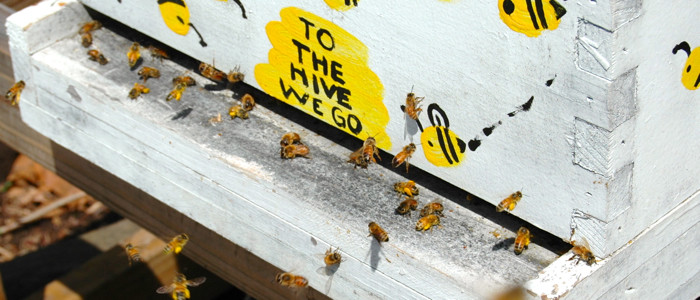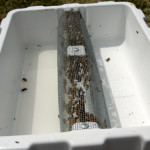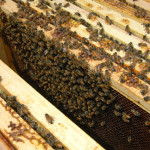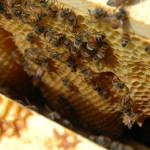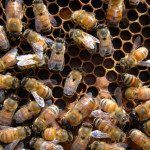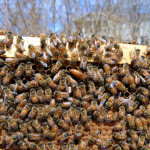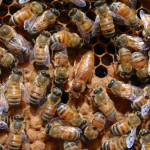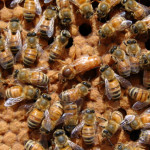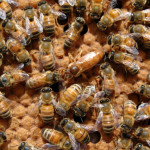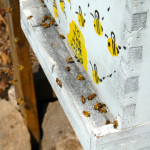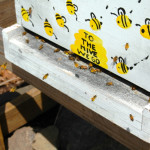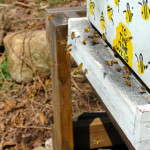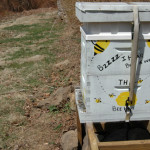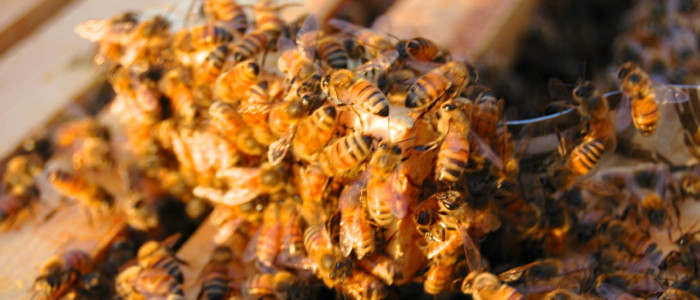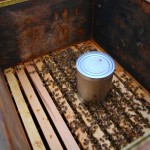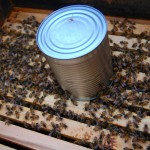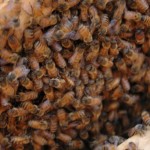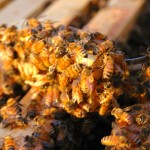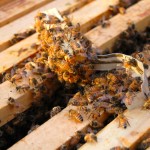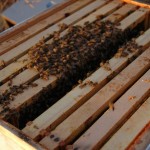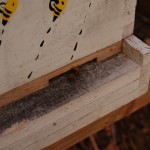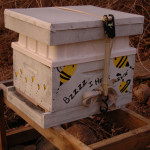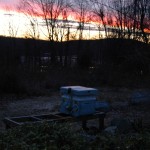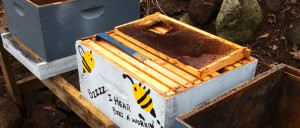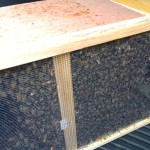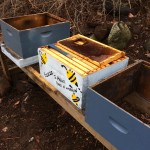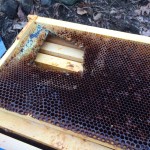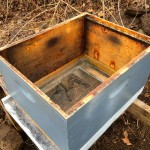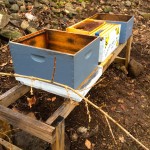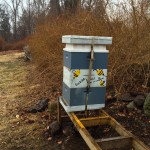It’s been two weeks since I put the package in and all is going great. Before getting into today, here’s what I did last weekend, April 5th.
- I peaked inside to see if all was going good and I got a glimpse of the queen but it was cool in the 40s and was getting ready to rain.
- I decided not to look to much or disturb them any more.
- I added Honey B Healthy to a quart of sugar syrup and added that to the top feeder.
- I took the other dead-out super and placed on top to see if they will clean it out. I just didn’t want to leave it off the hive much longer with all the honey and dead bees that were still in it.
April 12th, 2014
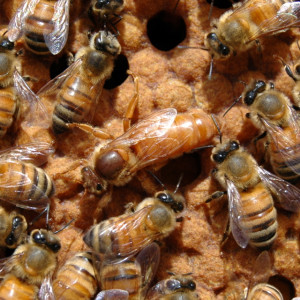 Bees were flying and coming in pollen heavy when I took my garden walk this morning.
Bees were flying and coming in pollen heavy when I took my garden walk this morning.- I took the top off and one entire side of the feeder was empty.
- I mixed up 3 quarts of sugar syrup and added Honey B Healthy.
- When I returned an hour or so later, the top feeder was full of bees inside and out. I left the top off after checking them earlier.
- Upon inspecting the top super, I did not find the queen or signs of brood.
- Looks like they are filling the frames with nectar, but I’ll bet this is the sugar syrup.
- Most of the top super had been cleaned of the dead bees and was cleaned out except one frame which had many bees still in it.
- I moved the frames around and put a frame that was not built out yet next to the one that still had dead bees in it. I’m thinking this gives them more space to pull the dead ones out.
- NOTE: I expected to see dead bees from the dead-out on the bottom screen, but never have. They must carry the dead completely out.
- Inspecting the bottom super, I was pleasantly surprised to see much healthy brood.
- Many of the brood was capped and new bees should be emerging any day. The first of the queen’s own bees.
- The second frame with brood, I saw the queen, She is getting this hive in perfect order.
- I switched the supers thinking this might help them clean out the remaining dead bees if they are closer to the bottom.
- I removed the reducer altogether.
- Added more sugar syrup to the top feeder.
The girls are doing great!
